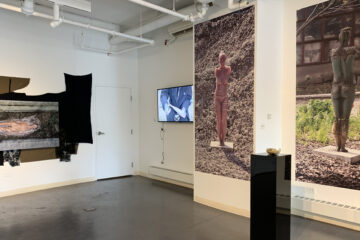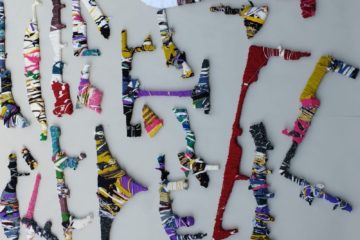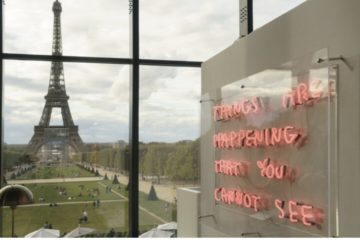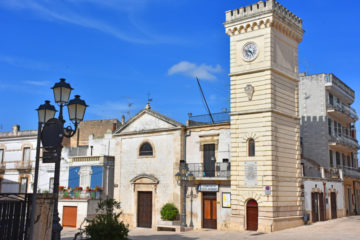MAJOR EXHIBITION OF GLOBAL 1960s SCULPTURE OPENS MARCH 14 – THE JEWISH MUSEUM – NEW YORK
Revisiting Its Seminal 1966 Exhibition Primary Structures,
The Jewish Museum Mounts Major Exhibition of International Sculpture from the 1960s
Curated by Jens Hoffmann, Other Primary Structures Is Presented in Two Parts
March 14 – May 18 & May 25 – August 3
New York, NY – Beginning in March, The Jewish Museum will present a major exhibition of sculpture from the 1960s featuring the work of artists from Latin America, Asia, Africa, the Middle East, and Eastern Europe, much of which has rarely been seen in the United States. Presented in two parts, Other Primary Structures revisits the premise of and builds upon the Museum’s seminal 1966 exhibition Primary Structures: Younger American and British Sculptors, the first American museum exhibition to survey the style now known as Minimalism. Primary Structures introduced the public to such artists as Carl Andre, Dan Flavin, Donald Judd, Sol LeWitt, Walter De Maria, Robert Morris, Anne Truitt, and others—figures unknown at the time but soon to become synonymous with a radically new approach to sculpture. Nearly 50 years later, Other Primary Structures revisits this formative moment in art history while also reexamining the period from today’s far more global perspective. The first part of the exhibition titled Others 1, on view from March 14 – May 18, 2014, examines work created between 1960 and 1967, while Others 2, on view from May 25 – August 3, presents work created between 1967 and 1970, some of which was directly influenced by the 1966 Primary Structures exhibition at The Jewish Museum.
The pivotal 1966 exhibition Primary Structures was organized by Kynaston McShine, then Curator of Painting and Sculpture at The Jewish Museum, who would later become Curator of Exhibitions of The Museum of Modern Art, New York. Critically acclaimed for its breakthrough approach to this new geometric and formally reductive artistic practice, the ’66 show also assumed a prominent place in the history of exhibition making by ushering in a new style of presenting ideas and objects in relation to space. Primary Structures focused exclusively on artists based in the United States and Britain.
Half a century later, Other Primary Structures responds to its predecessor by examining the full global reach of this groundbreaking movement via artists who were actively working in similar modes around the world in the 1960s, but who until now have not received significant attention in the United States. Featuring over 25 artists from Latin America, Asia, Africa, the Middle East, and Eastern Europe, Other Primary Structures explores the myriad international manifestations of reduced and abstract geometric sculpture in the 1960s, and suggests the wide range of motivations and influences that contributed to their production.
The first exhibition at The Jewish Museum organized by Jens Hoffmann, Deputy Director, Exhibitions and Programs, Other Primary Structures also examines the legacy of Primary Structures as a landmark of exhibition history. The new show includes oversize archival installation images, a ten-foot-tall model of the original exhibition, and an extensive timeline—all recalling the 1966 event.
Others 1, on view from March 14 – May 18, 2014, features work created before or simultaneous to the Primary Structures exhibition at The Jewish Museum, with a concentration of works from Latin America. A highlight of this section is Pakistani artist Rasheed Araeen’s large scale 1965 sculpture First Structure, reflecting his political activism in the 1960s and work as a champion of Minimal artists outside the major art centers of New York and London. Also on view are two works by Polish artist Edward Krasiński that were recently discovered in his family home, which are being shown in the U.S. for the first time. Others 1 also features four works by Brazilian artist Lygia Clark, three of which have been re-made for the exhibition by the artist’s foundation. Visitors are encouraged to handle the three small scale aluminum sculptures, as the artist intended. Additional artists in Others 1 include Sérgio Camargo, Willys de Castro, Noemí Escandell, Gego, Stanislav Kolíbal, David Medalla, Hélio Oiticica, Lygia Pape, Alejandro Puente, Norberto Puzzolo, and Branko Vlahović.
On view from May 25 – August 3, 2014, Others 2 features works created between 1967 and 1970. This part of the exhibition includes a concentration of work from Asia, where the Mona-Ha school thrived in the later part of the 1960s. While artists in Japan and Korea also used abstract geometric forms, their work primarily drew inspiration from Eastern philosophy and Zen tradition. Others 2 features a number of Mona-Ha artists as well as work by Jirō Takamatsu, who was a teacher and mentor to many of the artists in the group. Highlights include Japanese artist Sekine Nobuo’s 1969 Phase of Nothingness – Water, comprised of two black lacquered steel vessels filled with water, and South Korean artist Lee Ufan’s 1969 Relatum, which employs layers of gesso on canvas to resemble ephemeral sheets of paper.
Also on view in Others 2 are a number of works from Latin America that demonstrate the direct influence of Primary Structures on artists from that region. A Buenos Aires curator who had seen The Jewish Museum’s exhibition organized Primary Structures II in 1967, bringing together local artists working in similar modes. Several artists who participated in that exhibition will be highlighted in Other Primary Structures, including Oscar Bony, Noemí Escandell, David Lamelas, Noberto Puzzolo, and Juan Pablo Renzi.
Also featured in Others 2 is a work by Sudanese artist Amir Nour titled Grazing at Shendi (1969), an abstract rendering of grazing sheep in his native Africa, and Matter on the Move (1969) by Israeli artist Benny Efrat. Shown for the first time in the U.S., Efrat’s work is made of a steel plate placed into a large section of foam that is slowly compressed over the course of the exhibition. Additional artists represented in Others 2 are Yoshida Katsurō, Stanislav Kolíbal, Susumu Koshimizu, Ivan Kožarić, Antonieta Sosa, and Kishio Suga.
Jens Hoffmann has long been interested in the history of exhibitions. He joined The Jewish Museum in a newly created position as Deputy Director, Exhibitions and Programs in November 2012. Formerly Director of the California College of the Arts (CCA) Wattis Institute for Contemporary Art in San Francisco from 2007 to 2012 and Director of Exhibitions/Chief Curator at the Institute of Contemporary Art in London from 2003 to 2007, Hoffmann has organized more than 50 shows internationally including major biennials, most recently the 12th Istanbul Biennial (2011) and the 9th Shanghai Biennial (2012/13). In February 2014, Hoffmann’s book Show Time, the first to explore the recent history of exhibition making and shifts that have taken place in the practice of curating contemporary art over the last 25 years, will be published by Thames and Hudson, London and Distributed Art Publishers, New York.
Exhibition Catalogue
In conjunction with the exhibition, The Jewish Museum is publishing a two-volume set coupling a reissue of the previously out-of-print Primary Structures book from 1966 with a new companion catalogue for Other Primary Structures, distributed by Yale University Press. The illustrated second volume features an essay by Jens Hoffmann and the transcript of a 1966 symposium held in conjunction with Primary Structures on “The New Sculpture,” featuring panelists Donald Judd, Robert Morris, Kynaston McShine, and Barbara Rose. The Other Primary Structures catalogue is designed by A Practice for Everyday Life, based on the 1966 design by Elaine Lustig Cohen. The two-book set will be available worldwide and at The Jewish Museum’s Cooper Shop for $35.
Support
The exhibition is made possible in part by The Peter Jay Sharp Exhibition Fund.
Endowment support is provided by The Jewish Museum Centennial Exhibition Fund. Additional support is provided by Agnes Gund, The Cowles Charitable Trust, The Artis Grant Program, The Athena Foundation, and a group of donors in memory of James L. Weinberg.
About The Jewish Museum
Widely admired for its exhibitions and collections that inspire people of all backgrounds, The Jewish Museum is one of the world’s preeminent institutions devoted to exploring art and Jewish culture from ancient to contemporary. Located at Fifth Avenue and 92nd Street, The Jewish Museum organizes a diverse schedule of internationally acclaimed and award-winning temporary exhibitions as well as dynamic and engaging programs for families, adults, and school groups. The Museum was established in 1904, when Judge Mayer Sulzberger donated 26 ceremonial art objects to The Jewish Theological Seminary of America as the core of a museum collection. Today, the Museum maintains a collection of 25,000 objects – paintings, sculpture, works on paper, photographs, video, archaeological artifacts, ritual objects, and broadcast media.
The Jewish Museum is located at 1109 Fifth Avenue at 92nd Street, New York City. Museum hours are Saturday, Sunday, Monday, and Tuesday, 11am to 5:45pm; Thursday, 11am to 8pm; and Friday, 11am to 4pm. Museum admission is $15.00 for adults, $12.00 for senior citizens, $7.50 for students, free for visitors 18 and under and Jewish Museum members. Admission is Pay What You Wish on Thursdays from 5pm to 8pm and free on Saturdays. For information on The Jewish Museum, the public may call 212.423.3200 or visit the website at TheJewishMuseum.org.
2/10/14
Press Contacts:
Anne Scher/Alex Wittenberg
The Jewish Museum
212.423.3271 or pressoffice@thejm.org
Andrea Schwan
Andrea Schwan Inc.
917.371.5023 or andrea@andreaschwan.com
– See more at: http://www.thejewishmuseum.org/OtherPrimaryStructuresRelease#sthash.I0Z7o3Dq.dpuf






No Comment